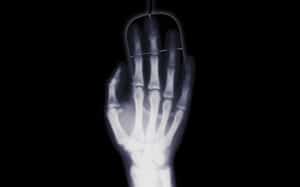
The cone-beam CT machine rotates around the patient’s head, it captures allĭata in one rotation. Just like the regular dental CT, they both give accurate and high-quality images. It can also detect problems in your gums, roots of the teeth, and the jaws. Placement and evaluates cysts and tumors in the mouth and the face.

Cephalometric projections show an entire side of the head.This x-ray examines the structures that are difficult to be seen clearlyīecause other nearby structures are blocking that view. Tomograms show a particular layer of the mouth and blur out the other layers.

This x-ray detects the position of fully emerged as well as emerging teeth, can see impacted teeth and helps in diagnosing tumors. Panoramic x-rays shows the entire mouth area - all the teeth of both the upper and lower jaws are shown - on a single x-ray.There are many types of extraoral x-rays: Occlusal x-rays track the development and placement of an entire arch of your teeth in either the upper or the lower jaw.Įxtraoral x-rays are used to detect the dental problems in the jaw and the skull.Periapical x-rays detect any unusual changes which should not happen, in the root and even Shows all teeth in one portion of either the upper or the lower jaw. Periapical x-rays show the whole tooth - from the crown to the root where the tooth attaches into your jaw.Bitewing x-raysĬan also help to determine the proper fitting of the crown (a cap that completely covers a tooth) or other restorations (e.g., bridges). Bite-wing x-rays detect the tooth decay and also changes the thickness of bone caused by gum diseases. Each bite-wing shows a tooth from itsĬrown to the level of the supporting bone. Bite-wing x-rays shows the details of the upper and lower teeth in one area of the mouth.There are many types of intraoral x-rays: Intraoral x-rays are the most common type of x-ray which shows the structure of the inside mouth. The two types of Dental X-rays: intraoral (the x-ray film is inside the mouth) and extraoral (the x-ray film is outside the mouth). Otherwise, monitor good tooth health through prevention.Determine if there is any periodontal disease which is becoming an oral care issue.Checks the health of the bones around the tooth.They give a high level of detail of the tooth, bone and its supporting tissues of the Intraoral X-rays are the most common type of X-ray taken in dentistry. X-rays are divided into two main categories, Intraoral and Extraoral where intraoral is an X-ray that is taken inside the mouth while an extraoral Your teeth and bones are very dense, so they absorb X-rays, while X-rays pass more easily through That passes through soft tissues and is absorbed by dense tissue.

Preventative, by helping a dentist to diagnose your potential oral care issues in your mouth before they become a major problem. They are diagnostic, but they can also be X-rays are also known as radiographs, they are an essential part of any dental treatment program.


 0 kommentar(er)
0 kommentar(er)
